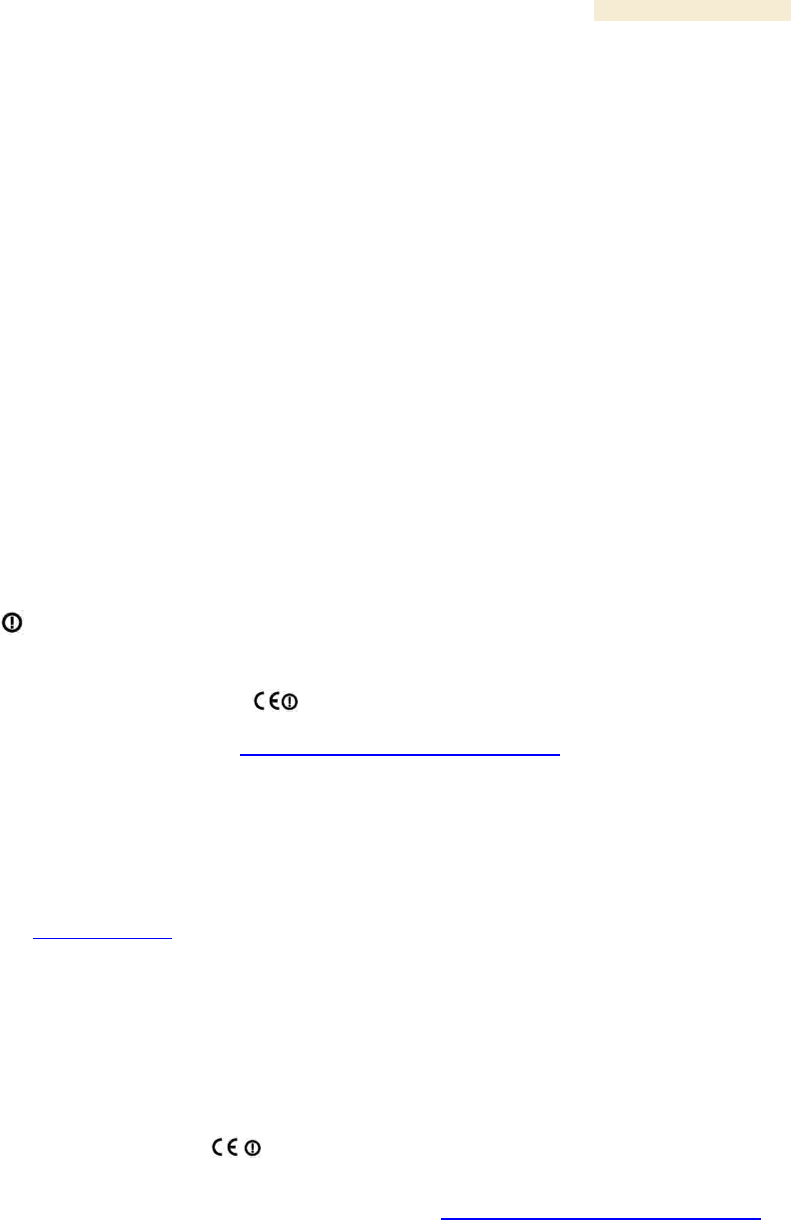Motorola Solutions 89FT7622 5.7GHz Fixed Wireless (ISM) User Manual Exhibit D Users Manual Part 9 per 2 1033 b3
Motorola Solutions, Inc. 5.7GHz Fixed Wireless (ISM) Exhibit D Users Manual Part 9 per 2 1033 b3
Contents
- 1. Exhibit D Users Manual Part 1 per 2 1033 b3
- 2. Exhibit D Users Manual Part 2 per 2 1033 b3
- 3. Exhibit D Users Manual Part 3 per 2 1033 b3
- 4. Exhibit D Users Manual Part 4 per 2 1033 b3
- 5. Exhibit D Users Manual Part 5 per 2 1033 b3
- 6. Exhibit D Users Manual Part 6 per 2 1033 b3
- 7. Exhibit D Users Manual Part 7 per 2 1033 b3
- 8. Exhibit D Users Manual Part 8 per 2 1033 b3
- 9. Exhibit D Users Manual Part 9 per 2 1033 b3
- 10. Users Manual
Exhibit D Users Manual Part 9 per 2 1033 b3

Release 8 Reference Information
Issue 2, December 2006 Draft for Regulatory Review 485
R
REFERENCE
EFERENCE
I
INFORMATION
NFORMATION

Release 8 Reference Information
Issue 2, December 2006 Draft for Regulatory Review 487
35 ADMINISTERING MODULES THROUGH TELNET
INTERFACE
In the telnet administrative interface to a module, the Canopy platform supports the
commands defined in Table 70. Many of these are not needed with CNUT.
Table 70: Supported telnet commands for module administration
Command
System help Definition
Notes
addwebfile
Add a custom web file
Syntax: addwebfile filename. Copies the
custom web file filename to non-volatile
memory.
burnfile
Burn flash from file
Syntax: burnfile filename. Updates the
CPU firmware with a new image. User the image
contained in filename if filename is
provided. If provided, filename must match
the module type (for example, SMboot.bin for
a Subscriber Module or APboot.bin for an
Access Point Module).
cat
Concatenate and display.
Syntax: cat filename. Displays the
contents of filename.
clearsyslog
Clear the system event
log
Syntax: clearsyslog. Clears the system
event log.
clearwebfile
Clear all custom web
files
Syntax: clearwebfile. Deletes all custom
web files.
exit
Exit from telnet session
Syntax: exit. Terminates the telnet interface
session.
fpga_conf
Update FPGA program
Syntax: fpga_conf. Forces a module to
perform a hard (FPGA and CPU) reset. (See
reset.)
ftp
File transfer application
Syntax: ftp. Launches the ftp client
application on the module.
help
Display command line
function help
Syntax: help. Displays a list of available telnet
commands and a brief description of each.
jbi
Update FPGA program
Syntax: jbi –aprogram file.jbc.
Updates the FPGA firmware with the new image
contained in file.jbc.
ls
List the contents of a
directory
Syntax: ls. Lists the file names of all files in the
directory.
Syntax: ls –l. Displays additional
information, such as the sizes and dates of the
files.
lsweb
List Flash Web files
Syntax: lsweb. Lists the file names of the saved
custom web files.

Reference Information Release 8
488 Draft for Regulatory Review Issue 2, December 2006
Command
System help Definition
Notes
ping
Send ICMP ECHO_REQUEST
packets to network hosts
Syntax: ping IPaddress. Sends an ICMP
ECHO_REQUEST to IPaddress and waits
for a response. If a response is received, the
system returns IPaddress is alive.
If no response is received, the system returns no
answer from IPaddress.
reset
Reboot the unit
Syntax: reset. Forces the module to perform a
hard (FPGA and CPU) module reset. (See
fpga_conf.)
rm
Remove (unlink) files
Syntax: rm filename. Remove filename.
syslog
Display system event log:
syslog <optional
filename>
Syntax: syslog. Displays the contents of the
system log. Syntax: syslog filename. Saves
the contents of the system log to filename.
Caution: overwrites filename if it already
exists.
telnet
Telnet application
Syntax: telnet hostIPaddress. Launches
the telnet client application on the Canopy
module.
tftp
tftp application
Syntax: tftp hostIPaddress. Launches
the tftp client application on the Canopy
module.
update
Enable automatic SM code
updating
Syntax: update actionlist.txt. Enables
the automated update procedure that
actionlist.txt specifies. (Supported for
only the Access Point Module.)
updateoff
Disable automatic SM
code updating
Syntax: updateoff. Disables the
automated update procedure.
version
Display the software
version string
Syntax: version. Displays the module
version string, which contains the
software/firmware/hardware versions, the
module type, and the operating
frequency.

Release 8 Reference Information
Issue 2, December 2006 Draft for Regulatory Review 489
36 LEGAL AND REGULATORY NOTICES
36.1 IMPORTANT NOTE ON MODIFICATIONS
Intentional or unintentional changes or modifications to the equipment must not be made unless
under the express consent of the party responsible for compliance. Any such modifications could
void the user’s authority to operate the equipment and will void the manufacturer’s warranty.
36.2 NATIONAL AND REGIONAL REGULATORY NOTICES
36.2.1 U.S. Federal Communication Commission (FCC) and Industry Canada (IC)
Notification
This device complies with Part 15 of the US FCC Rules and Regulations and with RSS-
210 of Industry Canada. Operation is subject to the following two conditions: (1) This
device may not cause harmful interference, and (2) This device must accept any
interference received, including interference that may cause undesired operation. In
Canada, users should be cautioned to take note that high power radars are allocated as
primary users (meaning they have priority) of 5250 – 5350 MHz and 5650 – 5850 MHz
and these radars could cause interference and/or damage to license-exempt local area
networks (LELAN).
This equipment has been tested and found to comply with the limits for a Class B digital
device, pursuant to Part 15 of the US FCC Rules and with RSS-210 of Industry Canada.
These limits are designed to provide reasonable protection against harmful interference
in a residential installation. This equipment generates, uses, and can radiate radio-
frequency energy and, if not installed and used in accordance with these instructions,
may cause harmful interference to radio communications. If this equipment does cause
harmful interference to radio or television reception, which can be determined by turning
the equipment on and off, the user is encouraged to correct the interference by one or
more of the following measures:
◦ Increase the separation between the affected equipment and the unit;
◦ Connect the affected equipment to a power outlet on a different circuit from that
which the receiver is connected to;
◦ Consult the dealer and/or experienced radio/TV technician for help.
FCC IDs and Industry Canada Certification Numbers are listed in Table 71:

Reference Information Release 8
490 Draft for Regulatory Review Issue 2, December 2006
Table 71: US FCC IDs and Industry Canada certification numbers
Module
Types
Operating
Frequency
Range
Maximum
Transmitter
Output
Power
Reflector or
Antenna
FCC ID
Industry
Canada
Certification
Number
SM AP
ISM 902 to 928
MHz
24 dBm
(250 mW)
26 dBm
(400 mW)
26 dBm
(400 mW)
26 dBm
(400 mW)
Canopy integrated
antenna with 12 dBi
gain
Maxrad Model #
Z1681, flat panel
with 10 dBi gain
Mars Model # MA-
IS91-T2, flat panel
with10 dBi gain
MTI Model # MT-
2630003/N, flat
panel with 10 dBi
gain
ABZ89FC5809
109W-9000ISM
SM AP
BH
ISM 2400-2483.5
MHz
25 dBm
(340 mW)
Allowed on SM and
BH
ABZ89FC5808
109W-2400
SM AP
BH
U-NII 5250-5350
MHz
23 dBm
(200 mW)
Not Allowed
ABZ89FC3789
109W-5200
BH
U-NII 5250-5350
MHz
5 dBm
(3.2 mW)
Recommended
ABZ89FC5807
109W-5210
SM AP
BH
ISM 5725-5850
MHz
23 dBm
(200 mW)
Allowed on SM and
BH
ABZ89FC5804
109W-5700
AP
ISM 5725-5850
MHZ
21 dBM
(125 mW)
Mars Model # MA-
WC50-5H antenna
with 15.5 dBi gain
ABZ89FT7622
none
36.2.2 Regulatory Requirements for CEPT Member States (http://www.cept.org)
When operated in accordance with the instructions for use, Motorola Canopy Wireless equipment
operating in the 2.4 and 5.4 GHz bands is compliant with CEPT Recommendation 70-03 Annex 3
for Wideband Data Transmission and HIPERLANs. For compliant operation in the 2.4 GHz band,
the transmit power (EIRP) from the built-in patch antenna and any associated reflector dish shall be
no more than 100mW (20dBm). For compliant operation in the 5.4 GHz band, the transmit power
(EIRP) from the built-in patch antenna and any associated reflector dish shall be no more than 1 W
(30 dBm).
The following countries have completely implemented CEPT Recommendation 70-03 Annex 3A
(2.4 GHz band):
◦ EU & EFTA countries: Austria, Belgium, Denmark, Spain, Finland, Germany,
Greece, Iceland, Italy, Ireland, Liechtenstein, Luxembourg, Netherlands, Norway,
Portugal, Switzerland, Sweden, UK
◦ New EU member states: Czech Republic, Cyprus, Estonia, Hungary, Lithuania,
Latvia, Malta, Poland, Slovenia, Slovakia
◦ Other non-EU & EFTA countries: Bulgaria, Bosnia and Herzegovina, Turkey

Release 8 Reference Information
Issue 2, December 2006 Draft for Regulatory Review 491
The following countries have a limited implementation of CEPT Recommendation 70-03
Annex 3A:
◦ France - Outdoor operation at 100mW is only permitted in the frequency band
2400 to 2454 MHz;
− Any outdoor operation in the band 2454 to 2483.5MHz shall not exceed
10mW (10dBm);
− Indoor operation at 100mW (20dBm) is permitted across the band 2400 to
2483.5 MHz
◦ French Overseas Territories:
− Guadeloupe, Martinique, St Pierre et Miquelon, Mayotte – 100mW indoor &
outdoor is allowed
− Réunion and Guyana – 100mW indoor, no operation outdoor in the band
2400 to 2420MHz
◦ Italy - If used outside own premises, general authorization required
◦ Luxembourg - General authorization required for public service
◦ Romania - Individual license required. T/R 22-06 not implemented
Motorola Canopy Radios operating in the 2400 to 2483.5MHz band and 5470 to 5725 MHz band
are categorized as “Class 2” devices within the EU and are marked with the class identifier symbol
, denoting that national restrictions apply (for example, France). The French restriction in the 2.4
GHz band will be removed in 2011. Users are advised to contact their national administrations for
the current status on the implementation of ECC DEC(04)08 for the 5.4GHz band.
This equipment is “CE” marked to show compliance with the European Radio &
Telecommunications Terminal Equipment (R&TTE) directive 1999/5/EC. The relevant Declaration
of Conformity can be found at http://www.canopywireless.com/doc.php.
Where necessary, the end user is responsible for obtaining any National licenses required to
operate this product and these must be obtained before using the product in any particular country.
However, for CEPT member states, 2.4 GHz Wideband Data Transmission equipment has been
designated exempt from individual licensing under decision ERC/DEC(01)07. For EU member
states, RLAN equipment in both the 2.4 & 5.4GHz bands is exempt from individual licensing under
Commission Recommendation 2003/203/EC. Contact the appropriate national administrations for
details on the conditions of use for the bands in question and any exceptions that might apply. Also
see http://www.ero.dk for further information.
36.2.3 European Union Notification
The 5.7 GHz connectorized product is a two-way radio transceiver suitable for use in Broadband
Wireless Access System (WAS), Radio Local Area Network (RLAN), or Fixed Wireless Access
(FWA) systems. It is a Class 2 device and uses operating frequencies that are not harmonized
throughout the EU member states. The operator is responsible for obtaining any national licenses
required to operate this product and these must be obtained before using the product in any
particular country.
This equipment is marked 0977 to show compliance with the European R&TTE directive
1999/5/EC.
The relevant Declaration of Conformity can be found at http://www.canopywireless.com/doc.php.

Reference Information Release 8
492 Draft for Regulatory Review Issue 2, December 2006
A European Commission decision, which is to be implemented by Member States by 31 October
2005, makes the frequency band 5470-5725 MHz available in all EU Member States for wireless
access systems. Under this decision, the designation of Canopy 5.4GHz products become “Class 1
devices” and these do not require notification under article 6, section 4 of the R&TTE Directive.
Consequently, these 5.4GHz products are only marked with the symbol and may be used in
any member state.
For further details, see
http://europa.eu.int/information_society/policy/radio_spectrum/ref_documents/index_en.htm.
36.2.4 UK Notification
The 5.7 GHz connectorized product has been notified for operation in the UK, and when operated
in accordance with instructions for use it is compliant with UK Interface Requirement IR2007. For
UK use, installations must conform to the requirements of IR2007 in terms of EIRP spectral density
against elevation profile above the local horizon in order to protect Fixed Satellite Services. The
frequency range 5795-5815 MHz is assigned to Road Transport & Traffic Telematics (RTTT) in the
U.K. and shall not be used by FWA systems in order to protect RTTT devices. UK Interface
Requirement IR2007 specifies that radiolocation services shall be protected by a Dynamic
Frequency Selection (DFS) mechanism to prevent co-channel operation in the presence of radar
signals.
36.2.5 Belgium Notification
Belgium national restrictions in the 2.4 GHz band include
◦ EIRP must be lower than 100 mW
◦ For crossing the public domain over a distance > 300m the user must have the
authorization of the BIPT.
◦ No duplex working
36.2.6 Luxembourg Notification
For the 2.4 GHz band, point-to-point or point-to-multipoint operation is only allowed on campus
areas. 5.4GHz products can only be used for mobile services.
36.2.7 Czech Republic Notification
2.4 GHz products can be operated in accordance with the Czech General License
No. GL-12/R/2000.
5.4 GHz products can be operated in accordance with the Czech General License
No. GL-30/R/2000.
36.2.8 Norway Notification
Use of the frequency bands 5725-5795 / 5815-5850 MHz are authorized with maximum radiated
power of 4 W EIRP and maximum spectral power density of 200 mW/MHz. The radio equipment
shall implement Dynamic Frequency Selection (DFS) as defined in Annex 1 of ITU-R
Recommendation M.1652 / EN 301 893. Directional antennae with a gain up to 23 dBi may be used
for fixed point-to-point links. The power flux density at the border between Norway and
neighbouring states shall not exceed - 122.5 dBW/m2 measured with a reference bandwidth of
1 MHz.
Canopy 5.7 GHz connectorized products have been notified for use in Norway and are compliant
when configured to meet the above National requirements. Users shall ensure that DFS
functionality is enabled, maximum EIRP respected for a 20 MHz channel, and that channel
spacings comply with the allocated frequency band to protect Road Transport and Traffic
Telematics services (for example, 5735, 5755, 5775 or 5835 MHz are suitable carrier frequencies).
Note that for directional fixed links, TPC is not required, conducted transmit power shall not exceed
30 dBm, and antenna gain is restricted to 23 dBi (maximum of 40W from the Canopy 5.7 GHz
connectorized products).

Release 8 Reference Information
Issue 2, December 2006 Draft for Regulatory Review 493
36.2.9 Greece Notification
The outdoor use of 5470-5725MHz is under license of EETT but is being harmonized according to
the CEPT Decision ECC/DEC/(04) 08, of 9th July. End users are advised to contact the EETT to
determine the latest position and obtain any appropriate licenses.
36.2.10 Brazil Notification
Local regulations do not allow the use of 900 MHz, 2.4 GHz, or 5.2 GHz Canopy modules in Brazil,
nor do they allow the use of passive reflectors on 5.4 or 5.7 GHz Canopy Access Points.
For compliant operation in the 5.4 GHz band, the transmit power (EIRP) from the built-in patch
antenna and any associated reflector dish shall be no more than 1 W (30 dBm). When using the
passive reflector along with a 5.4 GHz Canopy radio, the transmitter output power of the radio must
be configured no higher than 5 dBm. When not using the passive reflector, the transmitter output
power of the radio must be configured no higher than 23 dBm.
The operator is responsible for enabling the DFS feature on any Canopy 5.4 GHz radio, and re-
enabling it if the module is reset to factory defaults.
Important Note
This equipment operates as a secondary application, so it has no rights against harmful
interference, even if generated by similar equipment, and cannot cause harmful interference on
systems operating as primary applications.
36.2.11 Australia Notification
900 MHz modules must be set to transmit and receive only on 922 or 923 MHz so as to stay within
the ACMA approved band of 915 MHz to 928 MHz for the class license and not interfere with other
approved users.
After taking into account antenna gain (in dBi), 900 MHz modules’ transmitter output power (in
dBm) must be set to stay within the legal regulatory limit of 30 dBm (1 W) EIRP for this 900 MHz
frequency band.
36.3 EXPOSURE
See Preventing Overexposure to RF on Page 169.
36.4 EQUIPMENT DISPOSAL
Waste (Disposal)
of your Electronic
and Electric
Equipment
Please do not dispose of Electronic and Electric Equipment or Electronic and Electric Accessories
with your household waste. In some countries or regions, collection systems have been set up to
handle waste of electrical and electronic equipment. In European Union countries, please contact
your local equipment supplier representative or service centre for information about the waste
collection system in your country.
36.5 LEGAL NOTICES
36.5.1 Software License Terms and Conditions
ONLY OPEN THE PACKAGE, OR USE THE SOFTWARE AND RELATED PRODUCT IF YOU
ACCEPT THE TERMS OF THIS LICENSE. BY BREAKING THE SEAL ON THIS DISK KIT /
CDROM, OR IF YOU USE THE SOFTWARE OR RELATED PRODUCT, YOU ACCEPT THE
TERMS OF THIS LICENSE AGREEMENT. IF YOU DO NOT AGREE TO THESE TERMS, DO
NOT USE THE SOFTWARE OR RELATED PRODUCT; INSTEAD, RETURN THE SOFTWARE

Reference Information Release 8
494 Draft for Regulatory Review Issue 2, December 2006
TO PLACE OF PURCHASE FOR A FULL REFUND. THE FOLLOWING AGREEMENT IS A
LEGAL AGREEMENT BETWEEN YOU (EITHER AN INDIVIDUAL OR ENTITY), AND
MOTOROLA, INC. (FOR ITSELF AND ITS LICENSORS). THE RIGHT TO USE THIS PRODUCT
IS LICENSED ONLY ON THE CONDITION THAT YOU AGREE TO THE FOLLOWING TERMS.
Now, therefore, in consideration of the promises and mutual obligations contained herein, and for
other good and valuable consideration, the receipt and sufficiency of which are hereby mutually
acknowledged, you and Motorola agree as follows:
Grant of License. Subject to the following terms and conditions, Motorola, Inc., grants to you a
personal, revocable, non-assignable, non-transferable, non-exclusive and limited license to use on
a single piece of equipment only one copy of the software contained on this disk (which may have
been pre-loaded on the equipment)(Software). You may make two copies of the Software, but only
for backup, archival, or disaster recovery purposes. On any copy you make of the Software, you
must reproduce and include the copyright and other proprietary rights notice contained on the copy
we have furnished you of the Software.
Ownership. Motorola (or its supplier) retains all title, ownership and intellectual property rights to
the Software and any copies,
including translations, compilations, derivative works (including images) partial copies and portions
of updated works. The Software is Motorola’s (or its supplier's) confidential proprietary information.
This Software License Agreement does not convey to you any interest in or to the Software, but
only a limited right of use. You agree not to disclose it or make it available to anyone without
Motorola’s written authorization. You will exercise no less than reasonable care to protect the
Software from unauthorized disclosure. You agree not to disassemble, decompile or reverse
engineer, or create derivative works of the Software, except and only to the extent that such activity
is expressly permitted by applicable law.
Termination. This License is effective until terminated. This License will terminate immediately
without notice from Motorola or judicial resolution if you fail to comply with any provision of this
License. Upon such termination you must destroy the Software, all accompanying written materials
and all copies thereof, and the sections entitled Limited Warranty, Limitation of Remedies and
Damages, and General will survive any termination.
Limited Warranty. Motorola warrants for a period of ninety (90) days from Motorola’s or its
customer’s shipment of the Software to you that (i) the disk(s) on which the Software is recorded
will be free from defects in materials and workmanship under normal use and (ii) the Software,
under normal use, will perform substantially in accordance with Motorola’s published specifications
for that release level of the Software. The written materials are provided "AS IS" and without
warranty of any kind. Motorola's entire liability and your sole and exclusive remedy for any breach
of the foregoing limited warranty will be, at Motorola's option, replacement of the disk(s), provision
of downloadable patch or replacement code, or refund of the unused portion of your bargained for
contractual benefit up to the amount paid for this Software License.
THIS LIMITED WARRANTY IS THE ONLY WARRANTY PROVIDED BY MOTOROLA, AND
MOTOROLA AND ITS LICENSORS EXPRESSLY DISCLAIM ALL OTHER WARRANTIES,
EITHER EXPRESS OF IMPLIED, INCLUDING BUT NOT LIMITED TO IMPLIED WARRANTIES
OF MERCHANTABILITY AND FITNESS FOR A PARTICULAR PURPOSE AND
NONINFRINGEMENT. MOTOROLA DOES NOT WARRANT THAT THE OPERATION OF THE
SOFTWARE WILL BE UNINTERRUPTED OR ERROR-FREE, OR THAT DEFECTS IN THE
SOFTWARE WILL BE CORRECTED. NO ORAL OR WRITTEN REPRESENTATIONS MADE BY
MOTOROLA OR AN AGENT THEREOF SHALL CREATE A WARRANTY OR IN ANY WAY
INCREASE THE SCOPE OF THIS WARRANTY. MOTOROLA DOES NOT WARRANT ANY
SOFTWARE THAT HAS BEEN OPERATED IN EXCESS OF SPECIFICATIONS, DAMAGED,
MISUSED, NEGLECTED, OR IMPROPERLY INSTALLED. BECAUSE SOME JURISDICTIONS
DO NOT ALLOW THE EXCLUSION OR LIMITATION OF IMPLIED WARRANTIES, THE ABOVE
LIMITATIONS MAY NOT APPLY TO YOU.
Limitation of Remedies and Damages. Regardless of whether any remedy set forth herein fails
of its essential purpose, IN NO EVENT SHALL MOTOROLA OR ANY OF THE LICENSORS,
DIRECTORS, OFFICERS, EMPLOYEES OR AFFILIATES OF THE FOREGOING BE LIABLE TO
YOU FOR ANY CONSEQUENTIAL, INCIDENTAL, INDIRECT, SPECIAL OR SIMILAR DAMAGES

Release 8 Reference Information
Issue 2, December 2006 Draft for Regulatory Review 495
WHATSOEVER (including, without limitation, damages for loss of business profits, business
interruption, loss of business information and the like), whether foreseeable or unforeseeable,
arising out of the use or inability to use the Software or accompanying written materials, regardless
of the basis of the claim and even if Motorola or a Motorola representative has been advised of the
possibility of such damage. Motorola's liability to you for direct damages for any cause whatsoever,
regardless of the basis of the form of the action, will be limited to the price paid for the Software
that caused the damages. THIS LIMITATION WILL NOT APPLY IN CASE OF PERSONAL
INJURY ONLY WHERE AND TO THE EXTENT THAT APPLICABLE LAW REQUIRES SUCH
LIABILITY. BECAUSE SOME JURISDICTIONS DO NOT ALLOW THE EXCLUSION OR
LIMITATION OF LIABILITY FOR CONSEQUENTIAL OR INCIDENTAL DAMAGES, THE ABOVE
LIMITATION MAY NOT APPLY TO YOU.
Maintenance and Support. Motorola shall not be responsible for maintenance or support of the
software. By accepting the license granted under this agreement, you agree that Motorola will be
under no obligation to provide any support, maintenance or service in connection with the Software
or any application developed by you. Any maintenance and support of the Related Product will be
provided under the terms of the agreement for the Related Product.
Transfer. In the case of software designed to operate on Motorola equipment, you may not transfer
the Software to another party except: (1) if you are an end-user, when you are transferring the
Software together with the Motorola equipment on which it operates; or 2) if you are a Motorola
licensed distributor, when you are transferring the Software either together with such Motorola
equipment or are transferring the Software as a licensed duly paid for upgrade, update, patch, new
release, enhancement or replacement of a prior version of the Software. If you are a Motorola
licensed distributor, when you are transferring the Software as permitted herein, you agree to
transfer the Software with a license agreement having terms and conditions no less restrictive than
those contained herein. You may transfer all other Software, not otherwise having an agreed
restriction on transfer, to another party. However, all such transfers of Software are strictly subject
to the conditions precedent that the other party agrees to accept the terms and conditions of this
License, and you destroy any copy of the Software you do not transfer to that party. You may not
sublicense or otherwise transfer, rent or lease the Software without our written consent. You may
not transfer the Software in violation of any laws, regulations, export controls or economic
sanctions imposed by the US Government.
Right to Audit. Motorola shall have the right to audit annually, upon reasonable advance notice
and during normal business hours, your records and accounts to determine compliance with the
terms of this Agreement.
Export Controls. You specifically acknowledge that the software may be subject to United States
and other country export control laws. You shall comply strictly with all requirements of all
applicable export control laws and regulations with respect to all such software and materials.
US Government Users. If you are a US Government user, then the Software is provided with
"RESTRICTED RIGHTS" as set forth in subparagraphs (c)(1) and (2) of the Commercial Computer
Software-Restricted Rights clause at FAR 52 227-19 or subparagraph (c)(1)(ii) of the Rights in
Technical Data and Computer Software clause at DFARS 252.227-7013, as applicable.
Disputes. You and Motorola hereby agree that any dispute, controversy or claim, except for any
dispute, controversy or claim involving intellectual property, prior to initiation of any formal legal
process, will be submitted for non-binding mediation, prior to initiation of any formal legal process.
Cost of mediation will be shared equally. Nothing in this Section will prevent either party from
resorting to judicial proceedings, if (i) good faith efforts to resolve the dispute under these
procedures have been unsuccessful, (ii) the dispute, claim or controversy involves intellectual
property, or (iii) interim relief from a court is necessary to prevent serious and irreparable injury to
that party or to others.
General. Illinois law governs this license. The terms of this license are supplemental to any written
agreement executed by both parties regarding this subject and the Software Motorola is to license
you under it, and supersedes all previous oral or written communications between us regarding the
subject except for such executed agreement. It may not be modified or waived except in writing and
signed by an officer or other authorized representative of each party. If any provision is held invalid,
all other provisions shall remain valid, unless such invalidity would frustrate the purpose of our
agreement. The failure of either party to enforce any rights granted hereunder or to take action

Reference Information Release 8
496 Draft for Regulatory Review Issue 2, December 2006
against the other party in the event of any breach hereunder shall not be deemed a waiver by that
party as to subsequent enforcement of rights or subsequent action in the event of future breaches.
36.5.2 Hardware Warranty in U.S.
Motorola U.S. offers a warranty covering a period of one year from the date of purchase by the
customer. If a product is found defective during the warranty period, Motorola will repair or replace
the product with the same or a similar model, which may be a reconditioned unit, without charge for
parts or labor.
36.5.3 Limit of Liability
IN NO EVENT SHALL MOTOROLA BE LIABLE TO YOU OR ANY OTHER PARTY FOR ANY
DIRECT, INDIRECT, GENERAL, SPECIAL, INCIDENTAL, CONSEQUENTIAL, EXEMPLARY OR
OTHER DAMAGE ARISING OUT OF THE USE OR INABILITY TO USE THE PRODUCT
(INCLUDING, WITHOUT LIMITATION, DAMAGES FOR LOSS OF BUSINESS PROFITS,
BUSINESS INTERRUPTION, LOSS OF BUSINESS INFORMATION OR ANY OTHER
PECUNIARY LOSS, OR FROM ANY BREACH OF WARRANTY, EVEN IF MOTOROLA HAS
BEEN ADVISED OF THE POSSIBILITY OF SUCH DAMAGES. (Some states do not allow the
exclusion or limitation of incidental or consequential damages, so the above exclusion or limitation
may not apply to you.) IN NO CASE SHALL MOTOROLA’S LIABILITY EXCEED THE AMOUNT
YOU PAID FOR THE PRODUCT.

Release 8 Reference Information
Issue 2, December 2006 Draft for Regulatory Review 497
37 ADDITIONAL RESOURCES
Canopy provides two additional resources where you can raise questions and find
answers:
◦ Canopy Community Forums at
http://motorola.canopywireless.com/support/community/.
This resource facilitates communication with other users and with authorized
Canopy experts. Available forums include General Discussion, Network
Monitoring Tools, and Suggestions.
◦ Canopy Knowledge Base at
http://motorola.canopywireless.com/support/knowledge.
This resource facilitates exploration and searches, provides recommendations,
and describes tools. Available categories include
− General (Answers to general questions provide an overview of the Canopy
system.)
− Product Alerts
− Helpful Hints
− FAQs (frequently asked questions)
− Hardware Support
− Software Support
− Tools

Release 8 Reference Information
Issue 2, December 2006 Draft for Regulatory Review 499
38 HISTORY OF DOCUMENTATION
This section is a placeholder where changes for Issue 2 and later of this Canopy System
Release 8 User Guide will be listed.

Release 8
Glossary
Issue 2, December 2006 Draft for Regulatory Review 501
G
GLOSSARY
LOSSARY

Glossary Release 8
502 Draft for Regulatory Review Issue 2, December 2006
~.
The command that terminates an SSH Secure Shell session to
another server. Used on the Bandwidth and Authentication Manager
(BAM) master server in the database replication setup.
10Base-T
Technology in Ethernet communications that can deliver 10 Mb of data
across 328 feet (100 meters) of CAT 5 cable.
100Base-TX
Technology in Ethernet communications that can deliver 100 Mb of
data across 328 feet (100 meters) of CAT 5 cable.
169.254.0.0
Gateway IP address default in Canopy modules.
169.254.1.1
IP address default in Canopy modules.
169.254.x.x
IP address default in Microsoft and Apple operating systems without a
DHCP (Dynamic Host Configuration Protocol) server.
255.255.0.0
Subnet mask default in Canopy modules and in Microsoft and Apple
operating systems.
802.3
An IEEE standard that defines the contents of frames that are
transferred through Ethernet connections. Each of these frames
contains a preamble, the address to which the frame is sent, the
address that sends the frame, the length of the data to expect, the
data, and a checksum to validate that no contents were lost.
802.11
The IEEE standard for wireless local area networks.
802.15
The IEEE standard for wireless personal area networks.
Access Point Cluster
Two to six Access Point Modules that together distribute network or
Internet services to a community of 1,200 or fewer subscribers. Each
Access Point Module covers a 60° sector. This cluster covers as much
as 360°. Also known as AP cluster.
Access Point Module
Also known as AP. One module that distributes network or Internet
services in a 60° sector to 200 subscribers or fewer.
ACT/4
Second-from-left LED in the module. In the operating mode, this LED
is lit when data activity is present on the Ethernet link. In the aiming
mode for a Subscriber Module or a Backhaul timing slave, this LED is
part of a bar graph that indicates the quality of the RF link.
Activate
To provide feature capability to a module, but not to enable (turn on)
the feature in the module. See also Enable.
Address Resolution
Protocol
Protocol defined in RFC 826 to allow a network element to correlate a
host IP address to the Ethernet address of the host. See
http://www.faqs.org/rfcs/rfc826.html.

Release 8
Glossary
Issue 2, December 2006 Draft for Regulatory Review 503
Advanced Encryption
Standard
Over-the-air link option that provides extremely secure wireless
connections. Advanced Encryption Standard (AES) uses 128-bit
secret keys as directed by the government of the U.S.A. AES is not
exportable and requires a special AP to process the large keys.
AES
See Advanced Encryption Standard.
Aggregate Throughput
The sum of the throughputs in the uplink and the downlink.
AP
Access Point Module. One module that distributes network or Internet
services in a 60° sector to 200 subscribers or fewer.
APA
Access Point module address.
Apache
A trademark of Apache Software Foundation, used with permission.
APAS
Access Point Authentication Server. Licensed to authenticate SMs that
attempt to register to it. The AP licensed as APAS may or may not
have authentication enabled (turned on). See also Activate and
Enable.
API
Application programming interface for web services that supports
Prizm integration with an operations support systems (OSS) such as a
customer relationship management (CRM), billing, or provisioning
system.
APs MIB
Management Information Base file that defines objects that are
specific to the Access Point Module or Backhaul timing master. See
also Management Information Base.
ARP
Address Resolution Protocol. A protocol defined in RFC 826 to allow a
network element to correlate a host IP address to the Ethernet
address of the host. See http://www.faqs.org/rfcs/rfc826.html.
ASN.1
Abstract Syntax Notation One language. The format of the text files
that compose the Management Information Base.
Attenuation
Reduction of signal strength caused by the travel from the transmitter
to the receiver, and caused by any object between. In the absence of
objects between, a signal that has a short wavelength experiences a
high degree of attenuation nevertheless.
Authentication Key
Software key that correlates to the random number that the Bandwidth
and Authentication Manager (BAM) server generates and sends in a
challenge through the AP to the SM. The network operator can create
and, at some security risk, send this key over the air to the SM. The
SQL database in the BAM server correlates this key to QoS
information about the SM. The format of this key is 32 hexadecimal
characters of 0 to 9 and a to f, padded with leading zeroes in Release
4.2.3 and later. This key must be unique to the individual SM.

Glossary Release 8
504 Draft for Regulatory Review Issue 2, December 2006
Backhaul Module
Also known as BH. A module that provides point-to-point connectivity
as either a standalone link or a link to an Access Point cluster through
a selected Access Point Module. See also Backhaul Timing Master
and Backhaul Timing Slave.
Backhaul Timing
Master
Backhaul Module that sends network timing (synchronization) to
another Backhaul Module, which serves as the Backhaul timing slave.
Backhaul Timing Slave
Backhaul Module that receives network timing (synchronization) from
another Backhaul Module, which serves as the Backhaul timing
master.
BAM
Bandwidth and Authentication Manager. A Canopy software product
that operates on a Linux server to manage bandwidth, high-priority
channel, and VLAN settings individually for each registered Subscriber
Module. This software also provides secure Subscriber Module
authentication and user-specified encryption keys. The upgrade path
for this product is to Prizm Release 2.0 or later.
BER
Bit Error Rate. The ratio of incorrect data received to correct data
received.
BH
Backhaul Module. A module that provides point-to-point connectivity
as either a standalone link or a link to an Access Point cluster through
a selected Access Point Module.
Bit Error Rate
Ratio of incorrect data received to correct data received.
Box MIB
Management Information Base file that defines module-level objects.
See also Management Information Base.
BRAID
Stream cipher that the TIA (Telecommunications Industry Association)
has standardized. The secret keys in both modules communicate with
each other to establish the Data Encryption Standard key. See Data
Encryption Standard.
Bridge
Network element that uses the physical address (not the logical
address) of another to pass data. The bridge passes the data to either
the destination address, if found in the simple routing table, or to all
network segments other than the one that transmitted the data.
Canopy modules are Layer 2 bridges except that, where NAT is
enabled for an SM, the SM is a Layer 3 switch. Compare to Switch
and Router, and see also NAT.
Bridge Entry Timeout
Field
Value that the operator sets as the maximum interval for no activity
with another module, whose MAC address is the Bridge Entry. This
interval should be longer than the ARP (Address Resolution Protocol)
cache timeout of the router that feeds the network.
Buckets
Theoretical data repositories that can be filled at preset rates or
emptied when preset conditions are experienced, such as when data
is transferred.
Burst
Preset amount limit of data that may be continuously transferred.

Release 8
Glossary
Issue 2, December 2006 Draft for Regulatory Review 505
C/I Ratio
Ratio of intended signal (carrier) to unintended signal (interference).
Canopy
A trademark of Motorola, Inc.
canopy.xml
File that stores specifications for the Bandwidth and Authentication
Manager (BAM) GUI.
Carrier-to-interference
Ratio
Ratio of intended reception to unintended reception.
CarSenseLost Field
This field displays how many carrier sense lost errors occurred on the
Ethernet controller.
CAT 5 Cable
Cable that delivers Ethernet communications from module to module.
Later modules auto-sense whether this cable is wired in a straight-
through or crossover scheme.
cdf
Canopy Data Formatter tool that creates an initial ESN Data Table.
Inputs for this tool include a list of SM ESNs and default values of
sustained data rates and burst allocations for each listed ESN.
chkconfig
A command that the Linux® operating system accepts to enable
MySQL® and Apache™ Server software for various run levels of the
mysqld and httpd utilities.
CIR
See Committed Information Rate.
Cluster Management
Module
Module that provides power, GPS timing, and networking connections
for an AP cluster. Also known as CMM. If this CMM is connected to a
Backhaul Module, then this CMM is the central point of connectivity for
the entire site.
CMM
Cluster Management Module. A module that provides power, GPS
timing, and networking connections for an Access Point cluster. If this
CMM is connected to a Backhaul Module (BH), then this CMM is the
central point of connectivity for the entire site.
CodePoint
See DiffServ.
Color Code Field
Module parameter that identifies the other modules with which
communication is allowed. The range of values is 0 to 255. When set
at 0, the Color Code does not restrict communications with any other
module.
Committed Information
Rate
For an SM or specified group of SMs, a level of bandwidth that can be
guaranteed to never fall below a specified minimum. In the Canopy
implementation, this is controlled by the Low Priority Uplink CIR,
Low Priority Downlink CIR, High Priority Uplink CIR, and High Priority
Downlink CIR parameters.
Community String
Field
Control string that allows a network management station to access
MIB information about the module.
CPE
Customer premises equipment.

Glossary Release 8
506 Draft for Regulatory Review Issue 2, December 2006
CRCError Field
This field displays how many CRC errors occurred on the Ethernet
controller.
CRM
Customer relationship management system.
Data Encryption
Standard
Over-the-air link option that uses secret 56-bit keys and 8 parity bits.
Data Encryption Standard (DES) performs a series of bit permutations,
substitutions, and recombination operations on blocks of data.
Date of Last Transaction
A field in the data that the cmd show esn command generates from
data in the SQL database in the Bandwidth and Authentication
Manager (BAM) server. This field identifies the date of the most recent
authentication attempt by the SM. Expressed in the database output
as DLT.
Dell
A trademark of Dell, Inc.
Demilitarized Zone
Internet Protocol area outside of a firewall. Defined in RFC 2647. See
http://www.faqs.org/rfcs/rfc2647.html.
DES
Data Encryption Standard. An over-the-air link option that uses secret
56-bit keys and 8 parity bits. DES performs a series of bit
permutations, substitutions, and recombination operations on blocks of
data.
Desensed
Received an undesired signal that was strong enough to make the
module insensitive to the desired signal.
DHCP
Dynamic Host Configuration Protocol, defined in RFC 2131. Protocol
that enables a device to be assigned a new IP address and TCP/IP
parameters, including a default gateway, whenever the device reboots.
Thus DHCP reduces configuration time, conserves IP addresses, and
allows modules to be moved to a different network within the Canopy
system. See http://www.faqs.org/rfcs/rfc2131.html. See also Static IP
Address Assignment.
Diffraction
Partial obstruction of a signal. Typically diffraction attenuates a signal
so much that the link is unacceptable. However, in some instances
where the obstruction is very close to the receiver, the link may be
acceptable.
DiffServ
Differentiated Services, consistent with RFC 2474. A byte in the type
of service (TOS) field of packets whose values correlates to the
channel on which the packet should be sent. The value is a numeric
code point. Canopy maps each of 64 code points to values of 0
through 7. Three of these code points have fixed values, and the
remaining 61 are settable. Values of 0 through 3 map to the low-
priority channel; 4 through 7 to the high-priority channel. The
mappings are the same as 802.1p VLAN priorities. Among the settable
parameters, the values are set in the AP for all downlinks within the
sector and in the SM for each uplink.

Release 8
Glossary
Issue 2, December 2006 Draft for Regulatory Review 507
Disable
To turn off a feature in the module after both the feature activation file
has activated the module to use the feature and the operator has
enabled the feature in the module. See also Activate and Enable.
DLT
Date of last transaction. A field in the data that the cmd show esn
command generates from data in the SQL database in the Bandwidth
and Authentication Manager (BAM) server. This field identifies the
date of the most recent authentication attempt by the SM.
DMZ
Demilitarized Zone as defined in RFC 2647. An Internet Protocol area
outside of a firewall. See http://www.faqs.org/rfcs/rfc2647.html.
Dynamic Host
Configuration Protocol
Protocol defined in RFC 2131 that enables a device to be assigned a
new IP address and TCP/IP parameters, including a default gateway,
whenever the device reboots. Thus Dynamic Host Configuration
Protocol reduces configuration time, conserves IP addresses, and
allows modules to be moved to a different network within the Canopy
system. See http://www.faqs.org/rfcs/rfc2131.html. See also Static IP
Address Assignment.
Electronic Serial
Number
Hardware address that the factory assigns to the module for
identification in the Data Link layer interface of the Open Systems
Interconnection system. This address serves as an electronic serial
number. Same as MAC Address.
Element Pack
A license for Prizm management of a multi-point sector and covers the
AP and up to 200 SMs, a backhaul link, or an Powerline LV link.
Enable
To turn on a feature in the module after the feature activation file has
activated the module to use the feature. See also Activate.
Engine
Bandwidth and Authentication Manager (BAM) interface to the AP and
SMs. Unique sets of commands are available on this interface to
manage parameters and user access. Distinguished from SSE. See
also SSE.
ESN
Electronic Serial Number. The hardware address that the factory
assigns to the module for identification in the Data Link layer interface
of the Open Systems Interconnection system. This address serves as
an electronic serial number. Same as MAC Address.
ESN Data Table
Table in which each row identifies data about a single SM. In tab-
separated fields, each row stores the ESN, authentication key, and
QoS information that apply to the SM. The operator can create and
modify this table. This table is both an input to and an output from the
Bandwidth and Authentication Manager (BAM) SQL database, and
should be identically input to redundant BAM servers.
/etc/services
File that stores telnet ports on the Bandwidth and Authentication
Manager (BAM) server.
EthBusErr Field
This field displays how many Ethernet bus errors occurred on the
Ethernet controller.

Glossary Release 8
508 Draft for Regulatory Review Issue 2, December 2006
Ethernet Protocol
Any of several IEEE standards that define the contents of frames that
are transferred from one network element to another through Ethernet
connections.
Fade Margin
The difference between strength of the received signal and the
strength that the receiver requires for maintaining a reliable link. A
higher fade margin is characteristic of a more reliable link. Standard
operating margin.
FCC
Federal Communications Commission of the U.S.A.
Feature Activation Key
Software key file whose file name includes the ESN of the target
Canopy module. When installed on the module, this file activates the
module to have the feature enabled or disabled in a separate operator
action.
Field-programmable
Gate Array
Array of logic, relational data, and wiring data that is factory
programmed and can be reprogrammed.
File Transfer Protocol
Utility that transfers of files through TCP (Transport Control Protocol)
between computing devices that do not operate on the same platform.
Defined in RFC 959. See http://www.faqs.org/rfcs/rfc959.html.
FPGA
Field-programmable Gate Array. An array of logic, relational data, and
wiring data that is factory programmed and can be reprogrammed.
Frame Spreading
Transmission of a beacon in only frames where the receiver expects a
beacon (rather than in every frame). This avoids interference from
transmissions that are not intended for the receiver.
Frame Timing Pulse
Gated Field
Toggle parameter that prevents or allows the module to continue to
propagate GPS sync timing when the module no longer receives the
timing.
Free Space Path Loss
Signal attenuation that is naturally caused by atmospheric conditions
and by the distance between the antenna and the receiver.
Fresnel Zone
Space in which no object should exist that can attenuate, diffract, or
reflect a transmitted signal before the signal reaches the target
receiver.
FSK
Frequency Shift Keying, a variation of frequency modulation to
transmit data, in which two or more frequencies are used.
FTP
File Transfer Protocol, defined in RFC 959. Utility that transfers of files
through TCP (Transport Control Protocol) between computing devices
that do not operate on the same platform. See
http://www.faqs.org/rfcs/rfc959.html.
Global Positioning
System
Network of satellites that provides absolute time to networks on earth,
which use the time signal to synchronize transmission and reception
cycles (to avoid interference) and to provide reference for
troubleshooting activities.

Release 8
Glossary
Issue 2, December 2006 Draft for Regulatory Review 509
GPS
Global Positioning System. A network of satellites that provides
absolute time to networks on earth, which use the time signal to
synchronize transmission and reception cycles (to avoid interference)
and to provide reference for troubleshooting activities.
GPS/3
Third-from-left LED in the module. In the operating mode for an
Access Point Module or Backhaul timing master, this LED is
continuously lit as the module receives sync pulse. In the operating
mode for a Subscriber Module or a Backhaul timing slave, this LED
flashes on and off to indicate that the module is not registered. In the
aiming mode for a Subscriber Module or a Backhaul timing slave, this
LED is part of a bar graph that indicates the quality of the RF link.
GUI
Graphical user interface.
High-priority Channel
Channel that supports low-latency traffic (such as Voice over IP) over
low-latency traffic (such as standard web traffic and file downloads).
To recognize the latency tolerance of traffic, this channel reads the
IPv4 Type of Service Low Latency bit.
HTTP
Hypertext Transfer Protocol, used to make the Internet resources
available on the World Wide Web. Defined in RFC 2068. See
http://www.faqs.org/rfcs/rfc2068.html.
ICMP
Internet Control Message Protocols defined in RFC 792, used to
identify Internet Protocol (IP)-level problems and to allow IP links to be
tested. See http://www.faqs.org/rfcs/rfc792.html.
indiscards count Field
How many inbound packets were discarded without errors that would
have prevented their delivery to a higher-layer protocol. (Some of
these packets may have been discarded to increase buffer space.)
inerrors count Field
How many inbound packets contained errors that prevented their
delivery to a higher-layer protocol.
innucastpkts count Field
How many inbound non-unicast (subnetwork-broadcast or
subnetwork-multicast) packets were delivered to a higher-layer
protocol.
inoctets count Field
How many octets were received on the interface, including those that
deliver framing information.
Intel
A registered trademark of Intel Corporation.
inucastpkts count Field
How many inbound subnetwork-unicast packets were delivered to a
higher-layer protocol.
inunknownprotos count
Field
How many inbound packets were discarded because of an unknown
or unsupported protocol.

Glossary Release 8
510 Draft for Regulatory Review Issue 2, December 2006
IP
Internet Protocol defined in RFC 791. The Network Layer in the
TCP/IP protocol stack. This protocol is applied to addressing, routing,
and delivering, and re-assembling data packets into the Data Link
layer of the protocol stack. See http://www.faqs.org/rfcs/rfc791.html.
IP Address
32-bit binary number that identifies a network element by both network
and host. See also Subnet Mask.
IPv4
Traditional version of Internet Protocol, which defines 32-bit fields for
data transmission.
ISM
Industrial, Scientific, and Medical Equipment radio frequency band, in
the 900-MHz, 2.4-GHz, and 5.8-GHz ranges.
Jitter
Timing-based measure of the reception quality of a link. An acceptable
link displays a jitter value between 0 and 4 for a 10-Mbps Backhaul
timing slave in Release 4.0 and later, between 0 and 9 for a 20-Mbps
Backhaul timing slave, or between 5 and 9 for any Subscriber Module
or for a Backhaul timing slave in any earlier release.
L2TP over IPSec
Level 2 Tunneling Protocol over IP Security. One of several virtual
private network (VPN) implementation schemes. Regardless of
whether Subscriber Modules have the Network Address Translation
feature (NAT) enabled, they support VPNs that are based on this
protocol.
Late Collision Field
This field displays how many late collisions occurred on the Ethernet
controller. A normal collision occurs during the first 512 bits of the
frame transmission. A collision that occurs after the first 512 bits is
considered a late collision. A late collision is a serious network
problem because the frame being transmitted is discarded. A late
collision is most commonly caused by a mismatch between duplex
configurations at the ends of a link segment.
Latency Tolerance
Acceptable tolerance for delay in the transfer of data to and from a
module.
Line of Sight
Wireless path (not simply visual path) direct from module to module.
The path that results provides both ideal aim and an ideal Fresnel
zone.
Linux
A registered trademark of Linus Torvalds.
LNK/5
Furthest left LED in the module. In the operating mode, this LED is
continuously lit when the Ethernet link is present. In the aiming mode
for a Subscriber Module or a Backhaul timing slave, this LED is part of
a bar graph that indicates the quality of the RF link.
Logical Unit ID
Final octet of the 4-octet IP address of the module.
LOS
Line of sight. The wireless path (not simply visual path) direct from
module to module. The path that results provides both ideal aim and
an ideal Fresnel zone.

Release 8
Glossary
Issue 2, December 2006 Draft for Regulatory Review 511
LUID
Logical Unit ID. The final octet of the 4-octet IP address of the module.
MAC Address
Media Access Control address. The hardware address that the factory
assigns to the module for identification in the Data Link layer interface
of the Open Systems Interconnection system. This address serves as
an electronic serial number.
Management
Information Base
Space that allows a program (agent) in the network to relay
information to a network monitor about the status of defined variables
(objects).
Master
Designation that defines the role of a component relative to the role of
another. This designation both applies to a Backhaul module that
provides synchronization over the air to another Backhaul module
(a Backhaul timing slave) and applies to a Bandwidth and
Authentication Manager (BAM) server whose SQL database is
automatically copied onto a redundant BAM server (BAM slave). In
each case, the master is not a product. Rather, the master is the role
that results from deliberate configuration steps.
Maximum Information
Rate
The cap applied to the bandwidth of an SM or specified group of SMs.
In the Canopy implementation this is controlled by the Sustained
Uplink Data Rate, Uplink Burst Allocation, Sustained Downlink Data
Rate, and Downlink Burst Allocation parameters.
Media Access Control
Address
Hardware address that the factory assigns to the module for
identification in the Data Link layer interface of the Open Systems
Interconnection system. This address serves as an electronic serial
number.
MIB
Management Information Base. Space that allows a program (agent)
in the network to relay information to a network monitor about the
status of defined variables (objects).
MIR
See Maximum Information Rate.
MySQL
A registered trademark of MySQL AB Company in the United States,
the European Union, and other countries.
mysqladmin
A command to set the administrator and associated password on the
Bandwidth and Authentication Manager (BAM) server.
mysql-server
Package group that enables the SQL Database Server application in
the Red Hat® Linux® 9 operating system to provide SQL data for
Bandwidth and Authentication Manager (BAM) operations.
NAT
Network Address Translation defined in RFC 1631. A scheme that
isolates Subscriber Modules from the Internet. See
http://www.faqs.org/rfcs/rfc1631.html.
NBI
See Northbound Interface.

Glossary Release 8
512 Draft for Regulatory Review Issue 2, December 2006
NEC
National Electrical Code. The set of national wiring standards that are
enforced in the U.S.A.
NetBIOS
Protocol defined in RFC 1001 and RFC 1002 to support an
applications programming interface in TCP/IP. This interface allows a
computer to transmit and receive data with another host computer on
the network. RFC 1001 defines the concepts and methods. RFC 1002
defines the detailed specifications. See
http://www.faqs.org/rfcs/rfc1001.html and
http://www.faqs.org/rfcs/rfc1002.html.
Network Address
Translation
Scheme that defines the Access Point Module as a proxy server to
isolate registered Subscriber Modules from the Internet. Defined in
RFC 1631. See http://www.faqs.org/rfcs/rfc1631.html.
Network Management
Station
Monitor device that uses Simple Network Management Protocol
(SNMP) to control, gather, and report information about predefined
network variables (objects).
NMS
Network Management Station. A monitor device that uses Simple
Network Management Protocol (SNMP) to control, gather, and report
information about predefined network variables (objects).
Northbound Interface
The interface within Prizm to higher-level systems. This interface
consists of a Simple Network Management Protocol (SNMP) agent for
integration with a network management system (NMS); a Simple
Object Access Protocol (SOAP) XML-based application programming
interface (API) for web services that supports integration with an
operations support systems (OSS) such as a customer relationship
management (CRM), billing, or provisioning system; and console
automation that allows such higher-level systems to launch and
appropriately display the PrizmEMS management console in a
custom-developed GUI.
Object
Network variable that is defined in the Management Information Base.
OptiPlex
A trademark of Dell, Inc.
OSS
Operations support system, such as a customer relationship
management (CRM), billing, or provisioning system. The application
programming interface (API) for Prizm supports integrating Prizm with
an OSS.
outdiscards count Field
How many outbound packets were discarded without errors that would
have prevented their transmission. (Some of these packets may have
been discarded to increase buffer space.)
outerrrors count Field
How many outbound packets contained errors that prevented their
transmission.
outnucastpkts count
Field
How many packets for which the higher-level protocols requested
transmission to a non-unicast (subnetwork-broadcast or subnetwork-
multicast) address. The number includes those that were discarded or
not sent.

Release 8
Glossary
Issue 2, December 2006 Draft for Regulatory Review 513
outoctets count Field
How many octets were transmitted out of the interface, including those
that deliver framing information.
outucastpkts count Field
How many packets for which the higher-level protocols requested
transmission to a subnetwork-unicast address. The number includes
those that were discarded or not sent.
Override Plug
Device that enables the operator to regain control of a module that has
been locked by the No Remote Access feature, the 802.3 Link Disable
feature, or a password or IP address that cannot be recalled. This
device can be either fabricated on site or ordered.
Pentium
A registered trademark of Intel Corporation.
php-mysql
Package group that enables the Web Server application in the
Red Hat® Linux® 9 operating system to provide data from the SQL
Database Server application as PHP in the Bandwidth and
Authentication Manager (BAM) GUI.
Point-to-Point Protocol
Standards that RFC 1661 defines for data transmittal on the Internet.
Also known as PPP or PTP. See http://www.faqs.org/rfcs/rfc1661.html.
Power Control
Feature in Release 4.1 and later that allows the module to operate at
less than 18 dB less than full power to reduce self-interference.
PPTP
Point to Point Tunneling Protocol. One of several virtual private
network implementations. With the Network Address Translation
(NAT) feature enabled, Subscriber Modules do not support VPNs that
are based on this protocol. With NAT disabled, they do support VPNs
that are based on this protocol.
Prizm
The Canopy software product that allows users to partition their entire
Canopy networks into criteria-based subsets and independently
monitor and manage those subsets. Prizm Release 1.0 and later
includes a Northbound Interface to higher-level systems. Prizm
Release 2.0 and later integrates Canopy Bandwidth and
Authentication Manager (BAM) functionality and supports simple
migration of a pre-existing authentication, bandwidth, and VLAN
settings into the Prizm database.
Protective Earth
Connection to earth (which has a charge of 0 volts). Also known as
ground.
Proxy Server
Network computer that isolates another from the Internet. The proxy
server communicates for the other computer, and sends replies to only
the appropriate computer, which has an IP address that is not unique
or not registered.
PTMP
Point-to-Multipoint Protocol defined in RFC 2178, which specifies that
data that originates from a central network element can be received by
all other network elements, but data that originates from a non-central
network element can be received by only the central network element.
See http://www.faqs.org/rfcs/rfc2178.html.

Glossary Release 8
514 Draft for Regulatory Review Issue 2, December 2006
PTP
Point-to-Point Protocol. The standards that RFC 1661 defines for data
transmittal on the Internet. See http://www.faqs.org/rfcs/rfc1661.html.
QoS
Quality of Service. A frame field that Bandwidth and Authentication
Manager (BAM) provides to the AP and SM the sustained data rates
and burst data limits of the SM. The format of this field is 64
hexadecimal characters of 0 to 9 and a to f. The BAM SQL database
expresses this field as five contiguous subfields.
Quality of Service
A frame bit that Bandwidth and Authentication Manager (BAM)
provides to the AP and SM the sustained data rates and burst data
limits of the SM. The format of this field is 64 hexadecimal characters
of 0 to 9 and a to f. The BAM SQL database expresses this field as
five contiguous subfields. Also known as QoS.
Quick Start
Interface page that requires minimal configuration for initial module
operation.
Radio Signal Strength
Indicator
Relative measure of the strength of a received signal. An acceptable
link displays an Radio Signal Strength Indicator (RSSI) value of
greater than 700.
Random Number
Number that the Bandwidth and Authentication Manager (BAM)
generates, invisible to both the SM and the network operator, to send
to the SM as a challenge against an authentication attempt.
Reader
A registered trademark of Adobe Systems, Incorporated.
Recharging
Resumed accumulation of data in available data space (buckets). See
Buckets.
Red Hat
A registered trademark of Red Hat, Inc.
Reflection
Change of direction and reduction of amplitude of a signal that
encounters an object larger than the wavelength. Reflection may
cause an additional copy of the wavelength to arrive at after the
original, unobstructed wavelength arrives. This causes partial
cancellation of the signal and may render the link unacceptable.
However, in some instances where the direct signal cannot be
received, the reflected copy may be received and render an otherwise
unacceptable link acceptable.
Registrations MIB
Management Information Base file that defines registrations for global
items such as product identities and product components. See also
Management Information Base.
repl-m
A command that sets up the database replication process on a
Bandwidth and Authentication Manager (BAM) master server, uses
SFTP to copy both the database and the repl-s script to a BAM
slave server, and remotely executes the repl-s script on the BAM
slave server. See Master, Slave, repl-s, Secure Shell, and SFTP.

Release 8
Glossary
Issue 2, December 2006 Draft for Regulatory Review 515
repl-s
A command that sets up the database replication process on a
Bandwidth and Authentication Manager (BAM) slave server. See
Master, Slave, and repl-m.
RES
Result. A field in the data that the cmd show esn command
generates from the SQL database in the Bandwidth and Authentication
Manager (BAM) server.
RetransLimitExp Field
This field displays how many times the retransmit limit has expired.
RF
Radio frequency. How many times each second a cycle in the antenna
occurs, from positive to negative and back to positive amplitude.
RJ-11
Standard cable that is typically used for telephone line or modem
connection.
RJ-45
Standard cable that is typically used for Ethernet connection. This
cable may be wired as straight-through or as crossover. Later Canopy
modules auto-sense whether the cable is straight-through or
crossover.
Router
Network element that uses the logical (IP) address of another to pass
data to only the intended recipient. Compare to Switch and Bridge.
RPM
Red Hat® Package Manager.
rpm
A command that the Linux® operating system accepts to identify the
version of Linux® software that operates on the Bandwidth and
Authentication Manager (BAM) server.
RSSI
Radio Signal Strength Indicator. A relative measure of the strength of
a received signal. An acceptable link displays an RSSI value of greater
than 700.
RxBabErr Field
This field displays how many receiver babble errors occurred.
RxOverrun Field
This field displays how many receiver overrun errors occurred on the
Ethernet controller.
SDK
PrizmEMS™ Software Development Kit (SDK)—the document that
provides server administrator tasks, GUI developer information for
console automation that allows higher-level systems to launch and
appropriately display the Prizm management console. The SDK also
describes the how to define new element types and customize the
Details views.
Secure Shell
A trademark of SSH Communications Security.
Self-interference
Interference with a module from another module in the same network.

Glossary Release 8
516 Draft for Regulatory Review Issue 2, December 2006
SES/2
Third-from-right LED in the module. In the Access Point Module and
Backhaul timing master, this LED is unused. In the operating mode for
a Subscriber Module or a Backhaul timing slave, this LED flashes on
and off to indicate that the module is not registered. In the aiming
mode for a Subscriber Module or a Backhaul timing slave, this LED is
part of a bar graph that indicates the quality of the RF link.
Session Key
Software key that the SM and Bandwidth and Authentication Manager
(BAM) separately calculate based on that both the authentication key
(or the factory-set default key) and the random number. BAM sends
the session key to the AP. Neither the subscriber nor the network
operator can view this key. See also Random Number.
SFTP
Secure File Transfer Protocol.
Simple Network
Management Protocol
Standard that is used for communications between a program (agent)
in the network and a network management station (monitor). Defined
in RFC 1157. See http://www.faqs.org/rfcs/rfc1157.html.
skey
Software key that correlates to the random number that the Bandwidth
and Authentication Manager (BAM) server generates and sends in a
challenge through the AP to the SM. The network operator can create
and, at some security risk, send this key over the air to the SM. The
SQL database in the BAM server correlates this key to QoS
information about the SM. The format of this key is 32 hexadecimal
characters of 0 to 9 and a to f. This key must be unique to the
individual SM. Also known as authentication key.
Slave
Designation that defines the role of a component relative to the role of
another. This designation both applies to a Backhaul slave that
receives synchronization over the air from another Backhaul module
(a Backhaul timing master) and applies to a redundant Bandwidth and
Authentication Manager (BAM) server whose SQL database is
automatically overwritten by a copy from the primary BAM server
(BAM master). In each case, the slave is not a product. Rather, the
slave is the role that results from deliberate configuration steps.
SM
Customer premises equipment (CPE) device that extends network or
Internet services by communication with an Access Point Module or an
Access Point cluster.
SM MIB
Management Information Base file that defines objects that are
specific to the Subscriber Module or Backhaul timing slave. See also
Management Information Base.
SNMP
Simple Network Management Protocol, defined in RFC 1157. A
standard that is used for communications between a program (agent)
in the network and a network management station (monitor). See
http://www.faqs.org/rfcs/rfc1157.html.
SNMP Trap
Capture of information that informs the network monitor through
Simple Network Management Protocol of a monitored occurrence in
the module.

Release 8
Glossary
Issue 2, December 2006 Draft for Regulatory Review 517
SOAP
Simple Object Access Protocol (SOAP). The protocol that the
Northbound Interface in Prizm uses to support integration of Prizm
with an operations support systems (OSS) such as a customer
relationship management (CRM), billing, or provisioning system
SSE
Bandwidth and Authentication Manager (BAM) interface to the SQL
server. Unique sets of commands are available on this interface to
manage the BAM SQL database and user access. Distinguished from
Engine. See also Engine.
Standard Operating
Margin
See Fade Margin.
Static IP Address
Assignment
Assignment of Internet Protocol address that can be changed only
manually. Thus static IP address assignment requires more
configuration time and consumes more of the available IP addresses
than DHCP address assignment does. RFC 2050 provides guidelines
for the static allocation of IP addresses. See
http://www.faqs.org/rfcs/rfc2050.html. See also DHCP.
su -
A command that opens a Linux® operating system session for the user
root.
Subnet Mask
32-bit binary number that filters an IP address to reveal what part
identifies the network and what part identifies the host. The number of
subnet mask bits that are set to 1 indicates how many leading bits of
the IP address identify the network. The number of subnet mask bits
that are set 0 indicate how many trailing bits of the IP address identify
the host.
Subscriber Module
Customer premises equipment (CPE) device that extends network or
Internet services by communication with an Access Point Module or an
Access Point cluster.
Sustained Data Rate
Preset rate limit of data transfer.
Switch
Network element that uses the port that is associated with the physical
address of another to pass data to only the intended recipient.
Compare to Bridge and Router.
SYN/1
Second-from-right LED in the module. In the Access Point Module or
Backhaul timing master, as in a registered Subscriber Module or
Backhaul timing slave, this LED is continuously lit to indicate the
presence of sync. In the operating mode for a Subscriber Module or
Backhaul timing slave, this LED flashes on and to indicate that the
module is not registered. In the aiming mode for a Subscriber Module
or a Backhaul timing slave, this LED is part of a bar graph that
indicates the quality of the RF link.
Sync
GPS (Global Positioning System) absolute time, which is passed from
one module to another. Sync enables timing that prevents modules
from transmitting or receiving interference. Sync also provides
correlative time stamps for troubleshooting efforts.

Glossary Release 8
518 Draft for Regulatory Review Issue 2, December 2006
TCP
Alternatively known as Transmission Control Protocol or Transport
Control Protocol. The Transport Layer in the TCP/IP protocol stack.
This protocol is applied to assure that data packets arrive at the target
network element and to control the flow of data through the Internet.
Defined in RFC 793. See http://www.faqs.org/rfcs/rfc793.html.
tcp
Transport Control type of port. The Canopy system uses Port 3306:tcp
for MySQL® database communications, Port 9080:tcp for SSE telnet
communications, and Port 9090:tcp for Engine telnet
communications.
TDD
Time Division Duplexing.
TDMA
Time Division Multiple Access.
telnet
Utility that allows a client computer to update a server. A firewall can
prevent the use of the telnet utility to breach the security of the
server. See http://www.faqs.org/rfcs/rfc818.html,
http://www.faqs.org/rfcs/rfc854.html and
http://www.faqs.org/rfcs/rfc855.html.
Textual Conventions
MIB
Management Information Base file that defines Canopy system-
specific textual conventions. See also Management Information Base.
Time of Last
Transaction
A field in the data that the cmd show esn command generates from
data in the SQL database in the Bandwidth and Authentication
Manager (BAM) server. This field identifies the time of day of the most
recent authentication attempt by the SM. Expressed in the database
output as TLT.
TLT
Time of last transaction. A field in the data that the cmd show esn
command generates from data in the SQL database in the Bandwidth
and Authentication Manager (BAM) server. This field identifies the time
of day of the most recent authentication attempt by the SM.
TNAF
Total number of authentication requests failed. A field in the data that
the cmd show esn command generates from the SQL database in
the Bandwidth and Authentication Manager (BAM) server. This field
indicates how many times the SM (identified by ESN in the related
data) attempted to authenticate but was denied by BAM.
TNAR
Total number of authentication requests. A field in the data that the
cmd show esn command generates from the SQL database in the
Bandwidth and Authentication Manager (BAM) server. This field
indicates how many times the SM (identified by ESN in the related
data) attempted to authenticate, regardless of whether the attempt
succeeded.
Tokens
Theoretical amounts of data. See also Buckets.
TOS
8-bit field in that prioritizes data in a IP transmission. See
http://www.faqs.org/rfcs/rfc1349.html.

Release 8
Glossary
Issue 2, December 2006 Draft for Regulatory Review 519
TxUnderrun Field
This field displays how many transmission-underrun errors occurred
on the Ethernet controller.
UDP
User Datagram Protocol. A set of Network, Transport, and Session
Layer protocols that RFC 768 defines. These protocols include
checksum and address information but does not retransmit data or
process any errors. See http://www.faqs.org/rfcs/rfc768.html.
udp
User-defined type of port.
U-NII
Unlicensed National Information Infrastructure radio frequency band,
in the 5.1-GHz through 5.8-GHz ranges.
VID
VLAN identifier. See VLAN.
VLAN
Virtual local area network. An association of devices through software
that contains broadcast traffic, as routers would, but in the switch-level
protocol.
VPN
Virtual private network for communication over a public network.
One typical use is to connect remote employees, who are at home or
in a different city, to their corporate network over the Internet. Any of
several VPN implementation schemes is possible. With the Network
Address Translation feature (NAT) enabled, SMs on Canopy System
Release 4.2 or later support L2TP over IPSec (Level 2 Tunneling
Protocol over IP Security) VPNs, but do not support PPTP (Point to
Point Tunneling Protocol) VPNs. With NAT disabled, SMs support all
types of VPNs.